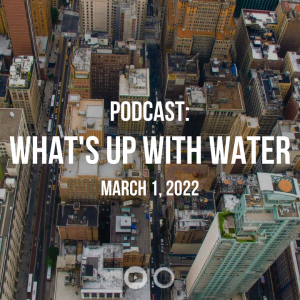Federal Water Tap, February 28: EPA Rejects Industry Objections to Chlorpyrifos Rules
The Rundown
- The EPA rejects industry objections to its restrictions on the pesticide chlorpyrifos.
- The Interior Department allocates $1.7 billion this year for tribal water rights settlements.
- The Bureau of Reclamation tells many farmers in California’s Central Valley not to expect irrigation water from federal canals this year.
And lastly, House committees hold hearings on federal pandemic relief funds and green infrastructure.
“We’re starting from a strong foundation.” – Radhika Fox, leader of the EPA Office of Water, discussing the rollout of funding from the infrastructure bill. The strong foundation Fox referred to was the state revolving funds, through which about 85 percent of the water funding will flow. Fox also noted the importance of technical assistance to disadvantaged communities so that they can access the funds.
By the Numbers
$1.7 Billion: Funding available in 2022 from the federal infrastructure bill for tribal water rights settlements. The Department of the Interior announced that the funds will support settlements with the Blackfeet, Crow, Confederated Salish and Kootenai, and Navajo, among others.
Zero: Most farms in California’s Central Valley that receive water from federal canals have been told to expect no water this year due to low reservoirs and continued dry conditions. For many municipal and industrial customers, the Bureau of Reclamation will supply about 25 percent of their contract.
News Briefs
EPA Dismisses Objections to Chlorpyrifos Decision
Claiming they are without merit, the U.S. Environmental Protection Agency dismissed industry objections to its decision last year to ban the use of the pesticide chlorpyrifos on food crops used in interstate commerce.
Objections were filed by the American Soybean Association, American Sugarbeet Growers Association, U.S. Beet Sugar Association, and Cherry Marketing Institute.
Last August, the EPA determined that current uses of the pesticide on food crops were an unacceptable risk to human health, particularly for brain development in children. People are exposed through food, drinking water, and residues.
Farmers can still use chlorpyrifos on food crops for export, as long as the importing country does not prohibit such uses of the chemical.
Studies and Reports
Decentralized Wastewater Financing
The EPA published a guide on how states can use their revolving funds to finance septic systems, neighborhood-scale systems, and other wastewater options that do not rely on a central treatment facility.
On the Radar
House Hearings on Pandemic Funds and Green Infrastructure
On March 1, the House Committee on Oversight and Reform will learn about the impact of the American Rescue Plan Act on state, local, and tribal governments. The act, the federal government’s last big budget outlay in response to the pandemic, set aside $350 billion for these jurisdictions.
In context: Billions Flow to Water Systems from Federal Pandemic Relief Funds
Then on March 2, a House Science subcommittee will discuss the science of nature-based infrastructure.
Federal Water Tap is a weekly digest spotting trends in U.S. government water policy. To get more water news, follow Circle of Blue on Twitter and sign up for our newsletter.
Brett writes about agriculture, energy, infrastructure, and the politics and economics of water in the United States. He also writes the Federal Water Tap, Circle of Blue’s weekly digest of U.S. government water news. He is the winner of two Society of Environmental Journalists reporting awards, one of the top honors in American environmental journalism: first place for explanatory reporting for a series on septic system pollution in the United States(2016) and third place for beat reporting in a small market (2014). He received the Sierra Club’s Distinguished Service Award in 2018. Brett lives in Seattle, where he hikes the mountains and bakes pies. Contact Brett Walton







Leave a Reply
Want to join the discussion?Feel free to contribute!